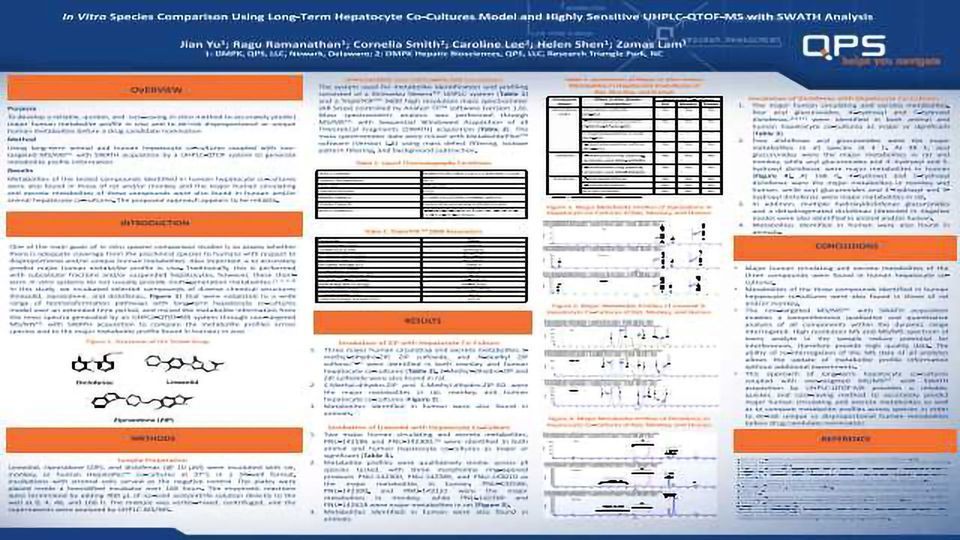In Vitro Species Comparison Using Long-Term Hepatocyte Co-Cultures Model and Highly Sensitive UHPLC-QTOF-MS with SWATH Analysis

One of the main goals of in vitro species comparison studies is to assess whether there is adequate coverage from the preclinical species to humans with respect to disproportional and/or unique human metabolites. Also important is to accurately predict major human metabolite profile in vivo. Traditionally, this is performed with subcellular fractions and/or suspended hepatocytes; however, these short-term in vitro systems do not usually provide multi-generation metabolites.[1, 2, 3, 4] In this study, we incubated selected compounds of diverse chemical structures (linezolid, ziprasidone, and diclofenac, Figure 1) that were subjected to a wide range of biotransformation pathways with long-term hepatocyte co-cultures model over an extended time period, and mined the metabolite information from the mass spectra generated by an UHPLC-QTOF-MS system through non-targeted MS/MSALL with SWATH acquisition to compare the metabolite profiles across species and to the major metabolite profile found in humans in vivo.




